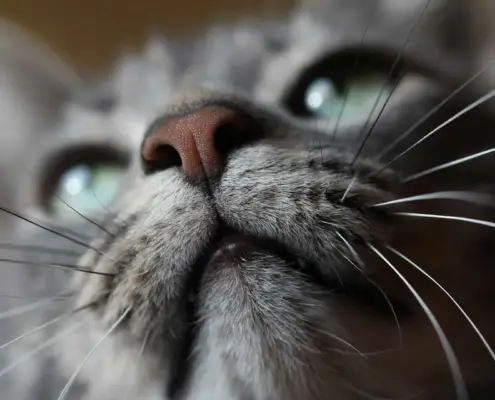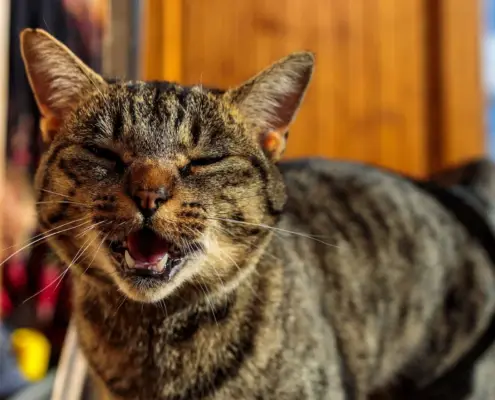
Cats are known for their enigmatic behavior and mysterious ways. They can be aloof and independent, yet at times display affection and seek human companionship. This duality has led to a longstanding debate among pet owners and scientists alike: do cats have emotions? Understanding the emotional lives of our feline friends is essential for building a strong bond and providing them with the care they need. In this article, we will delve into the fascinating world of cat emotions, exploring scientific evidence, common behaviors, and tips for fostering their emotional well-being.
Understanding Emotions in Animals
Emotions are complex psychological and physiological states that influence an individual’s behavior and subjective experience. While emotions have long been attributed to humans, research has shown that many animals also experience a wide range of emotions. Dogs, for example, have been extensively studied in this regard, but what about cats? Are they capable of experiencing emotions such as joy, fear, or even love?
The Debate: Do Cats Have Emotions?
The question of whether cats have emotions has sparked a lively debate among experts. Some argue that cats are purely instinct-driven creatures, while others believe they have a rich emotional life. One reason for this debate is the difficulty in objectively measuring and interpreting emotions in animals, as they cannot verbally express themselves. However, many cat owners will attest to witnessing emotional displays from their feline companions, such as purring when content or hiding when scared. These observations suggest that cats may indeed possess emotions, but scientific evidence is needed to support these claims.
Scientific Evidence of Emotions in Cats
Recent scientific studies have shed light on the emotional lives of cats. Research has shown that cats have complex neural systems, similar to those found in humans and other animals known to experience emotions. For example, cats have a limbic system, a part of the brain responsible for processing emotions. Additionally, studies have revealed that cats release hormones associated with emotions, such as oxytocin, also known as the “love hormone.”
Common Emotional Behaviors in Cats
Cats exhibit a variety of emotional behaviors that are indicative of their inner experiences. When content, cats often display relaxed body language, purring, and kneading. On the other hand, fear and anxiety can manifest as flattened ears, dilated pupils, and a tucked tail. Cats may also exhibit aggression as a response to perceived threats. These emotional behaviors are important signals that can help us understand how cats are feeling and respond accordingly.
How to Recognize and Interpret Cat Emotions
Recognizing and interpreting cat emotions can be challenging, but with practice, it becomes easier to understand their subtle cues. Paying attention to body language, vocalizations, and overall behavior can provide valuable insights into a cat’s emotional state. For example, a cat with erect ears and a relaxed body is likely content, while a cat with a lowered body posture and hissing may be feeling fearful or threatened. It is important to approach cats with patience and respect, allowing them to express their emotions in their own unique ways.
The Role of Socialization and Environment
Socialization and environment play a crucial role in shaping a cat’s emotional well-being. Cats that are exposed to positive experiences, such as gentle handling and interactions with humans and other animals, are more likely to develop a healthy range of emotions. Conversely, cats that experience trauma or neglect may exhibit emotional imbalances or behavioral issues. Providing a safe and enriching environment, with plenty of opportunities for play, exploration, and social interaction, is essential for fostering emotional well-being in cats.
Cat-Human Bond: Emotional Connection
The bond between cats and humans goes beyond mere companionship. It is a deep emotional connection that can bring immense joy and comfort to both parties. Cats have a remarkable ability to sense and respond to human emotions, offering support and companionship during difficult times. Studies have shown that interactions with cats can lower stress levels and improve overall emotional well-being. Understanding and nurturing this bond is key to maintaining a harmonious and fulfilling relationship with our feline friends.
Tips for Fostering Emotional Well-being in Cats
To ensure the emotional well-being of our cats, there are several key factors to consider. Providing a stable and loving home environment, with regular routines and a consistent source of affection, is essential. Enriching their environment with toys, scratching posts, and vertical spaces for climbing can help satisfy their natural instincts and provide mental stimulation. Spending quality time engaging in play and interactive activities further strengthens the bond and promotes emotional well-being. Lastly, regular veterinary check-ups and addressing any behavioral issues promptly are crucial for maintaining a cat’s emotional health.
Appreciating the Emotional Depth of Cats
In conclusion, cats are not the emotionless creatures they are often portrayed to be. Scientific evidence, coupled with our own observations, suggests that cats do indeed have emotions. By understanding and recognizing the emotional cues displayed by our feline companions, we can deepen our bond and provide them with the care and support they need. Cats have the capacity for love, joy, fear, and a range of other emotions, making them complex and fascinating beings. Let us appreciate and honor the emotional depth of cats, for they bring immeasurable richness to our lives.
If you enjoyed my article, I would appreciate you sharing it with your network.

Sima Ndlebe
Sima writes for CatBuzz. He is interested in Cats, Health and Fitness, and Entrepreneurship.
Published: 14 November 2023



